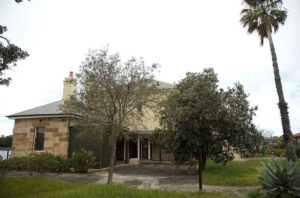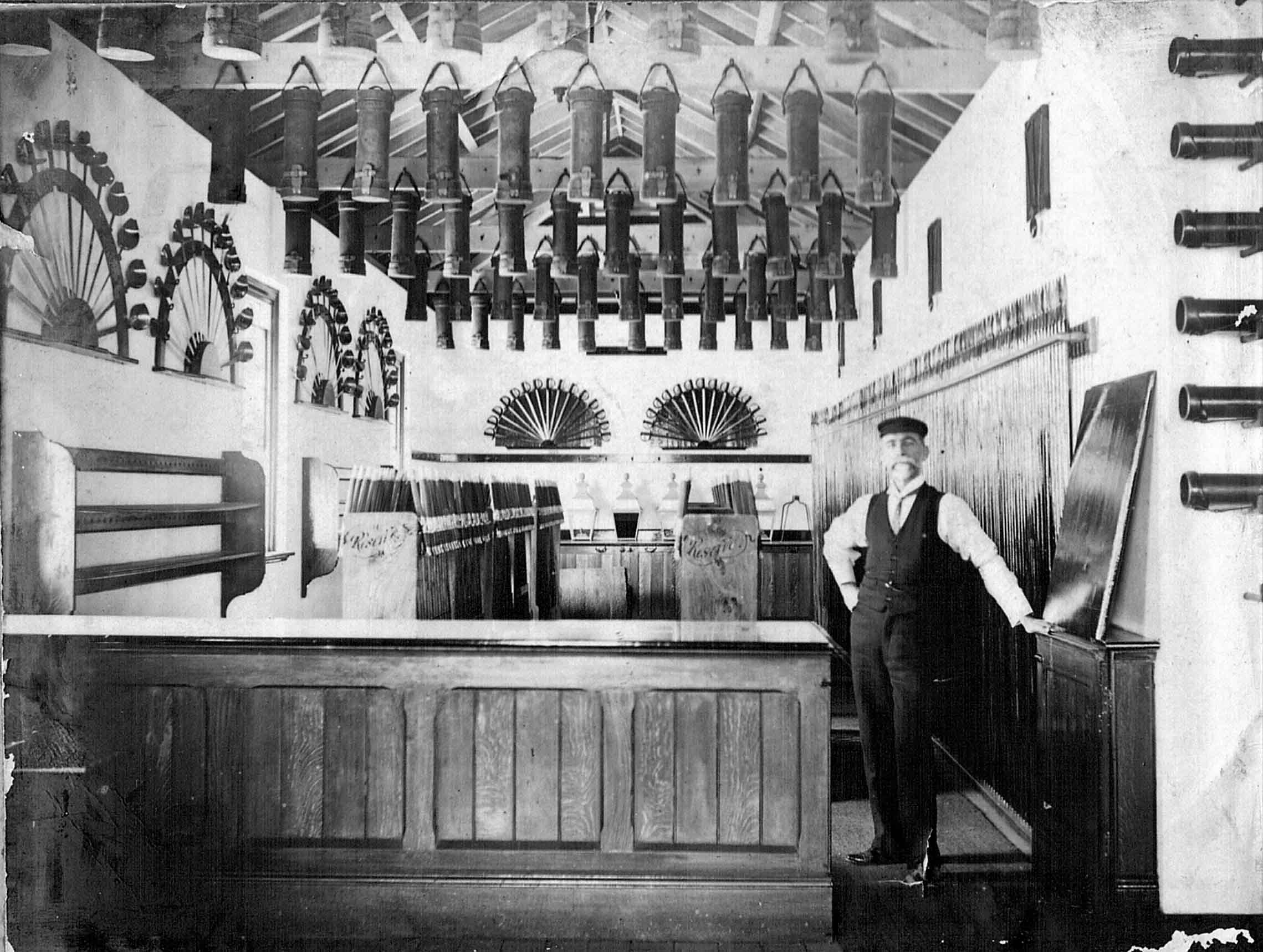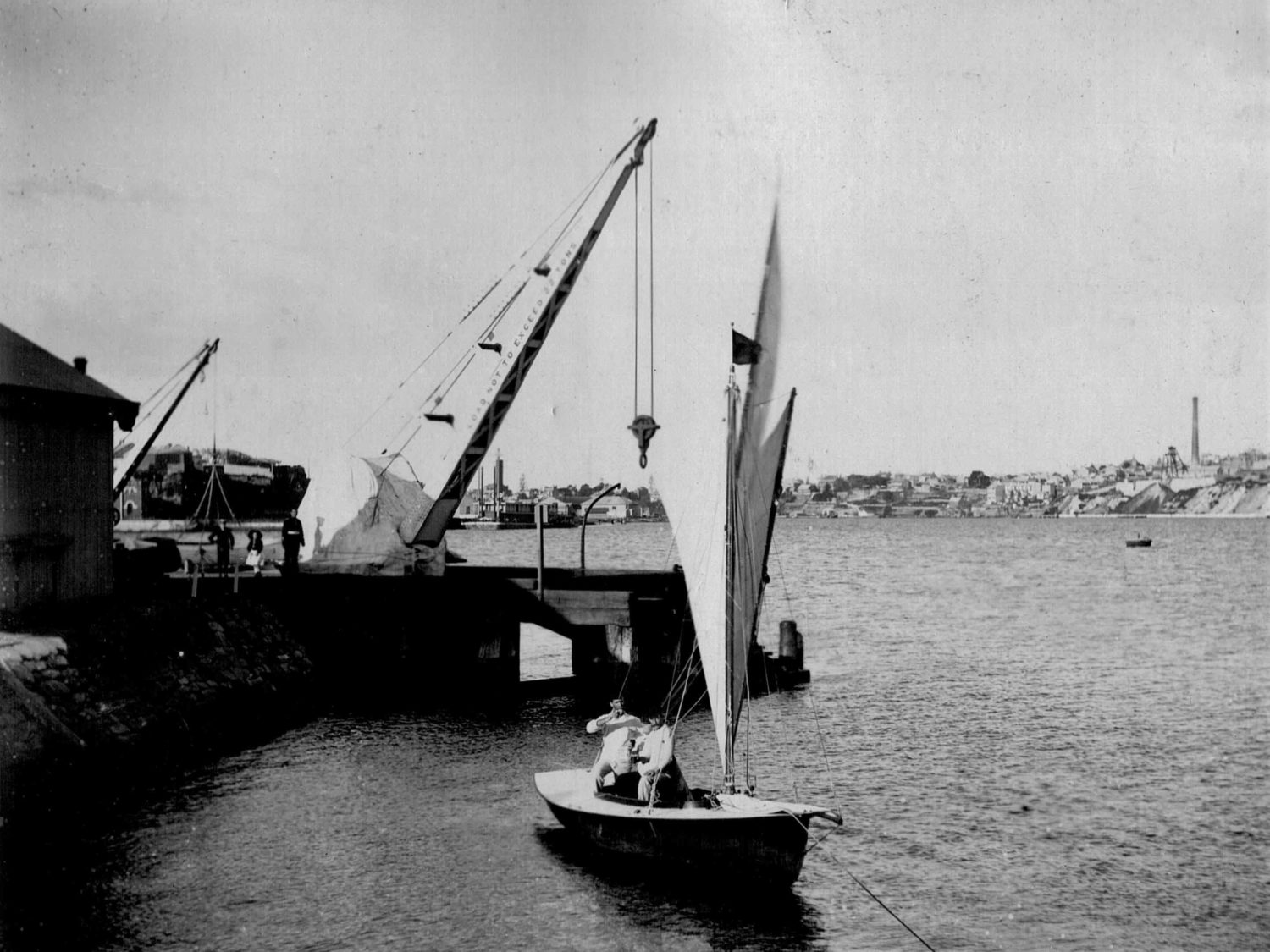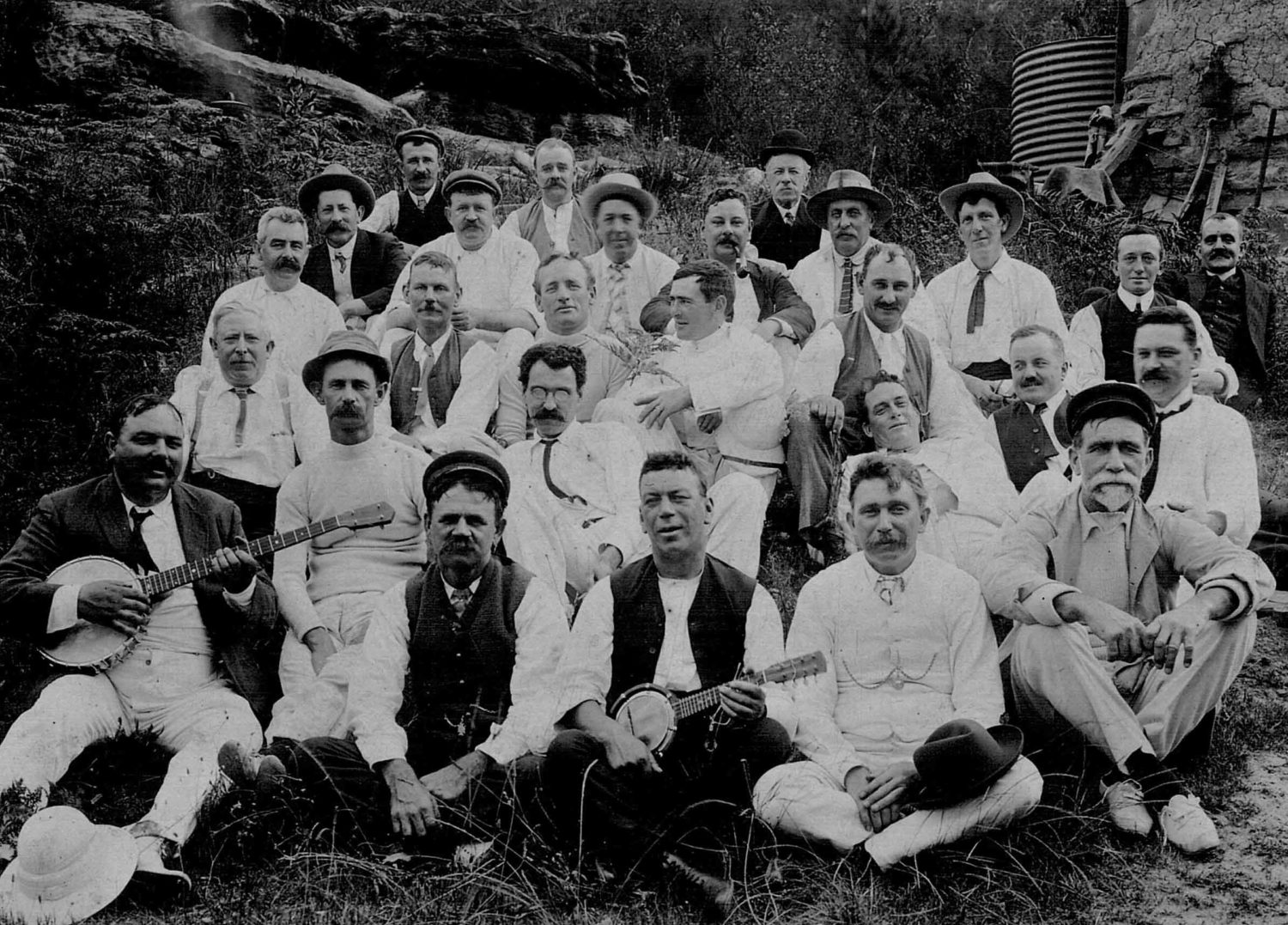Spectacle Island has a long history as it is the oldest explosives and armaments storage complex in Australia. It was initially the Colonial Gunpowder Magazine from 1862 – 1884.
In 1884 when Spectacle Island was transferred from the NSW Colonial Government to the Royal Navy the Island functioned as both a Magazine (for explosives) and Gunwharf (for guns). Stocks were kept for both the ships of the Australia Squadron, and for arming merchant vessels in the event of war. Existing buildings were altered and new ones were constructed to meet changed military needs. The Royal Australian Navy took over Spectacle Island from the Royal Navy in 1913 and continued its use as an armament depot.
This very brief history of Spectacle Island has been included to show that it was a hazardous site and not a place to be considered for genteel entertainment. However, the diaries and biographies of people who worked and lived on the Island described “social events” on the island that showed they never felt inhibited by the dangers of the goods stored on the Island. Their descriptions of the social life on the Island display a fairly relaxed social atmosphere to visitors.
To describe the social life, material from Henry Capper’s biography, Aft from the Hawsehole has been summarised. Mr Capper was Gunner-in-charge of Spectacle Island from 1895 to 1900. Information from Lieutenant-Commander James Creber, Officer-in-Charge 1904 – 1908; 1912 – 1918 has also been used.

Mr Capper says when he and his wife, four children and a nurse arrived on Spectacle Island there were four other families of the storekeeping staff, and a guard of twelve marines under a Lance- Sergeant, also resident on the Island. Capper’s residence on the island was a solid sandstone bungalow surrounded by gardens on three sides and an oyster bed in the front when the tide went out. A wide veranda had been added on three sides since the original build. It had superb viewsup and down the harbour. A perfect place for entertaining – if stores of armaments were not there!
The Cappers also purchased a little sailing dinghy to enjoy boating on the harbour.
The Cappers discovered that the residents on Spectacle Island treated Sunday as an idle day, the only person properly dressed being the sentry on duty. They decided to organise a Sunday Service. A large receiving store was cleared on Saturday afternoons, arranged with seats and books, and the family harmonium taken there. All the clergy and ministers of the surrounding townships arranged for a roster to come over in turn and conduct a service. This custom was observed throughout the five years of the Capper’s stay. At the request of the residents, fortnightly evening entertainments were arranged in the same building. There were often over two hundred visitors on the Island.
The Cappers even gave a garden party on the island and invited a large number of their friends and the friends of the other four families of the staff resident on the island. There was a band and dancing on the green and among the many armament storage buildings.
The Cappers certainly set the standard for social entertaining on the Island and this was followed by the Crebers. Lieutenant-Commander James Creber was Officer-in-Charge after the Cappers, and it is during this time that Mr Crane, the friend of Janice’s great aunt is associated with the Island. But first let us have a look at an event organised by the Crebers.
The Crebers hosted a picnic for wounded soldiers from the Soldier’s Convalescent Home at Woolwich. There was a launch ride up Parramatta River and then the group were taken to the Creber’s residence on Spectacle Island. Here on the immaculately kept lawns between the powder magazines, testing rooms and laboratories, afternoon tea was served to the merry music of a gramophone.
The entertainment on Spectacle Island included friends from the mainland and this is important when we examine how Janice’s great aunt and family may have become good friends with Mr Crane.
Mr Crane had a long career in the Royal Navy which ended in Sydney in 1900. It is understood that he then worked as a civilian storekeeper at Spectacle Island until 1913. William Robert Crane was named as a Foreman at Spectacle Island in 1905, according to a report in the Sydney Morning Herald of 14 July 1905.
We know that Mr Crane was appointed to the Commonwealth Naval Forces for 3 years as a civilian storekeeper: “William Robert Crane is appointed Ordnance Storehouseman at the Naval Ordnance Depot, Spectacle Island, Sydney, for a period of three years, as from 1st July, 1913, with consolidated pay at the rate of £210 per annum.” (Commonwealth of Australia Gazette, 7 March 1914 (No.12), page 368).
There is no record of Mr Crane having married. If he never married this might explain something about his attachment to Janice’s family who retain a sentimental attachment to ‘Rocklands’, the Righetti family home at 17 The Avenue Hunters Hill. Mr Crane and other naval people used to visit it for musical afternoons around the piano. Eva Righetti who was Crane’s housekeeper and renown for her beautiful singing voice would have performed at home and social events held on the Island. Mr Crane named his sailing boat Eva in her honour.
Further Reading:
Mr Henry Capper, Gunner, RN, Officer-In-Charge of the Naval Ordnance Depot, Spectacle Island, available at: http://users.tpg.com.au/borclaud/ranad/capper.html
Extract from Henry Capper’s autobiography, describes his 6 years’ experience of Spectacle Island, available at: http://users.tpg.com.au/borclaud/ranad/capper_autobiog.html.
Royal Navy Ordnance Depot, Spectacle Island 1884 – 1913, available at:
http://users.tpg.com.au/borclaud/ranad/foundation_spectacle_island_rn.html
Video Documentary: From Gunpowder to Relics and A Curious Spectacle, available at:https://navyhistory.au/shop/from-gunpowder-to-relics/
2
Selected Images from Eva Righetti Photographic Archive Collection
Mr Crane in the Gun Room, Spectacle Island Armament Depot. Robert William Crane, 21 July 1855 to 18 August 1918.









